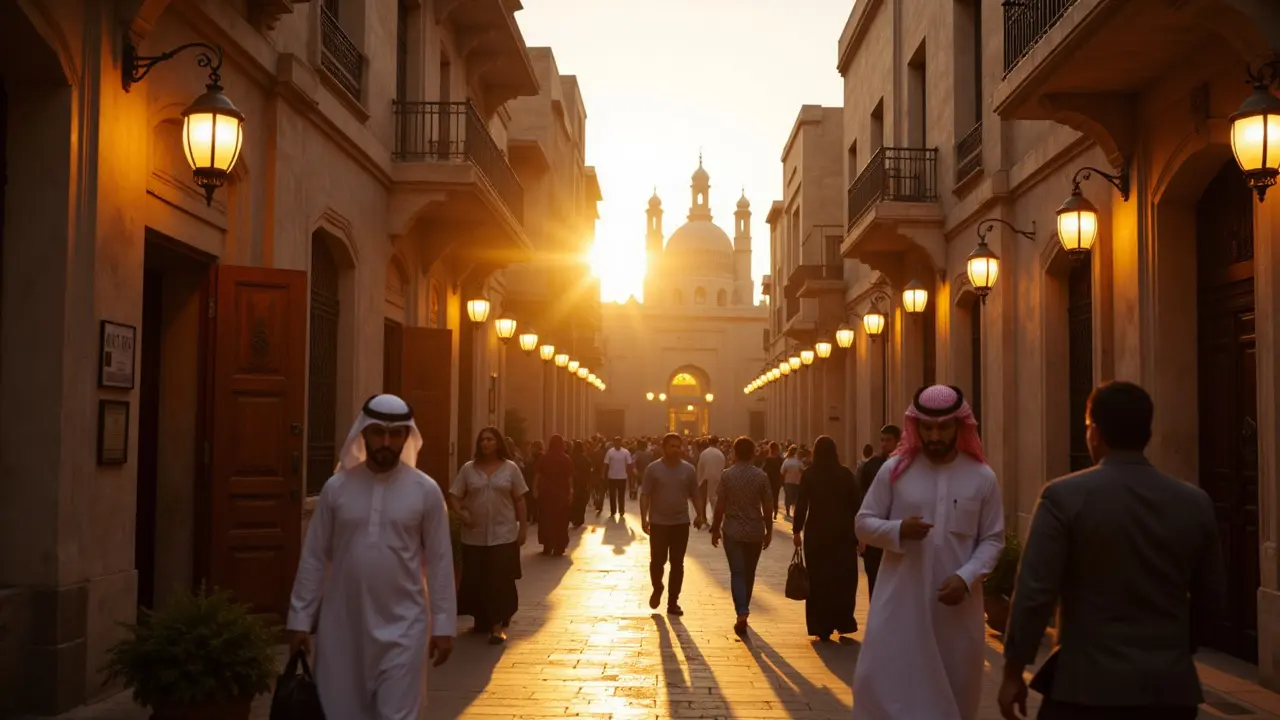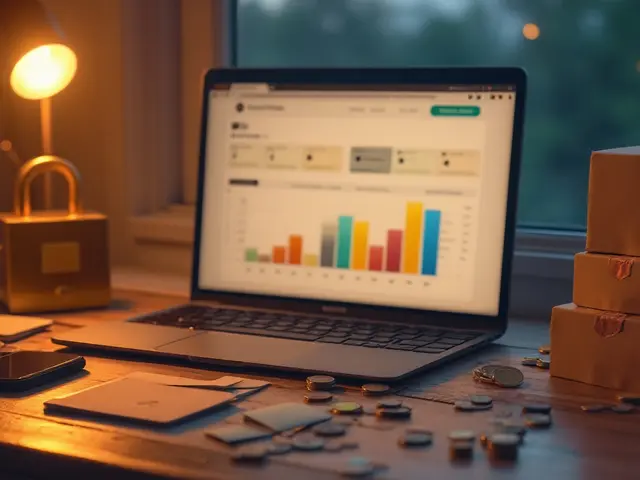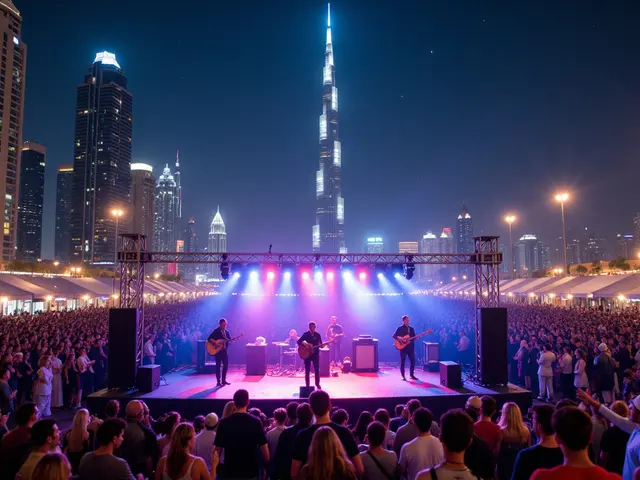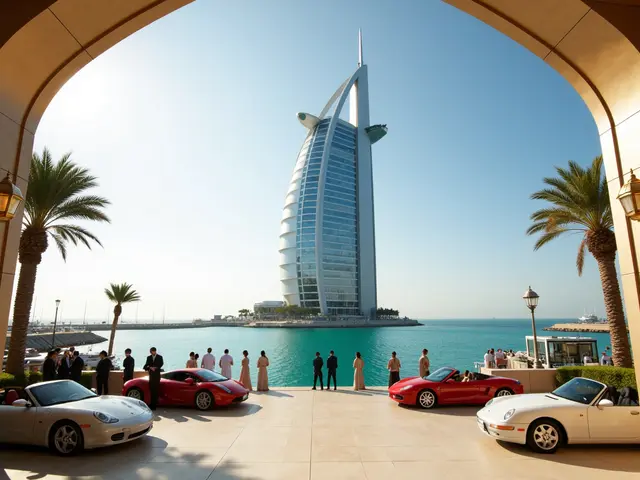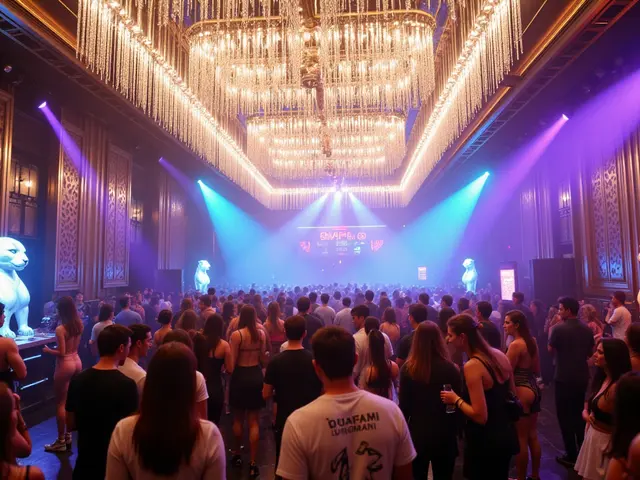Before the soaring towers and grand shopping malls, Dubai thrived with ancient trading posts, quiet souks, and stories that ripple through the city’s winding alleys. Nobody tells these stories better than the locals who grew up alongside the Creek and still shop in the same souks their grandparents did. So, forget the glossy brochures—if you really want to see Dubai’s historical sites through the eyes of those who call it home, prepare for a journey that’s nothing like what you’ll find on Instagram.
Old Dubai: Beyond the Guidebook
Take the Dubai Creek—today, it’s lined with dhows unloading sacks of spices and electronics. But for locals, this waterway means memories of simpler times, childhood dhow rides, fishing, and neighborhood gatherings during Eid. The smell of cardamom and grilled fish still hits you as you step off an abra, the traditional wooden boat. For residents, a Creek crossing isn’t something special; it’s part of the daily commute, costing just a single dirham and a chat with a boat captain who probably remembers your uncle by name.
Try visiting Deira’s Spice Souk early on a Friday morning, when the crowds fade and local shopkeepers set out new arrivals. Emiratis and long-term expats don’t just buy saffron here; they haggle with humor and buy hidden treasures from shelves that tourists often overlook—like dried lemons or the famed Iranian dried fish.
Al Fahidi Historical Neighbourhood (also known as Al Bastakiya) isn’t just a backdrop for influencers. Local artists display their works in tucked-away galleries, and elders gather for domino games or over qahwa (Arabic coffee) at the Arabian Tea House—one of the oldest courtyard cafés in the area. Insider tip: during “Sikka Art Fair” held each March, locals host pop-up workshops and poetry readings under wind towers. Don’t be shy—join a session, even if your Arabic needs work. People are far more welcoming than you’ve been led to believe.
Want to see Dubai as it was? The Dubai Museum in Al Fahidi Fort tells the story from Bedouin times. But the best stories come from the security guard who’s worked there since the ’90s—catch him near closing time. His anecdotes about sandstorms washing up right to the fort’s moat are more vivid than any exhibit description.
Traditions That Still Shape the City
Historical Dubai isn’t frozen—its old customs still influence the way locals and expats interact today. Ramadan evenings in Al Shindagha bring families together for communal Iftar, and the call to prayer echoing across the Creek at sunset might pause conversations but never the sense of community. If you’re invited by a local family for Iftar or Eid celebrations, never refuse—it’s their way of opening up the city’s true soul.
Here’s an old Emirati saying: “He who doesn’t have an old home has nothing new.” You see this spirit in the revived gold merchant families of the Gold Souk, where sons and daughters take over family shops that date back to the 1940s. They mix classic designs with new styles, but if you ask for a necklace ‘just like my grandmother wore,’ you’ll be shown a secret jewelry drawer reserved for regulars and old friends.
Museums like the Etihad Museum are popular with Emiratis for a reason—this is where the stories of Dubai’s founding rulers, their alliances, and even their disputes, play out in never-boring detail. Locals might reminisce about family trips away from the summer heat, but nobody forgets the importance of National Day celebrations in December. On 2nd December, heritage villages spring up along Jumeirah Beach and the Creek, and everyone—from schoolchildren to CEOs—dresses in flag colors, exchanging sweets and tales from when Dubai was just “that little town by the water.”
The Dubai Culture & Arts Authority keeps heritage relevant through free events, local music nights, and traditional dance performances at Al Seef. You won’t find these listed on major tourist websites—locals find out through WhatsApp community groups or a neighbor’s invitation. If you spot an advert for a “Liwa dance night” or “poetry majlis,” drop your plans and go. You’ll see more of Dubai’s heart in one evening than in a month of museum tours.
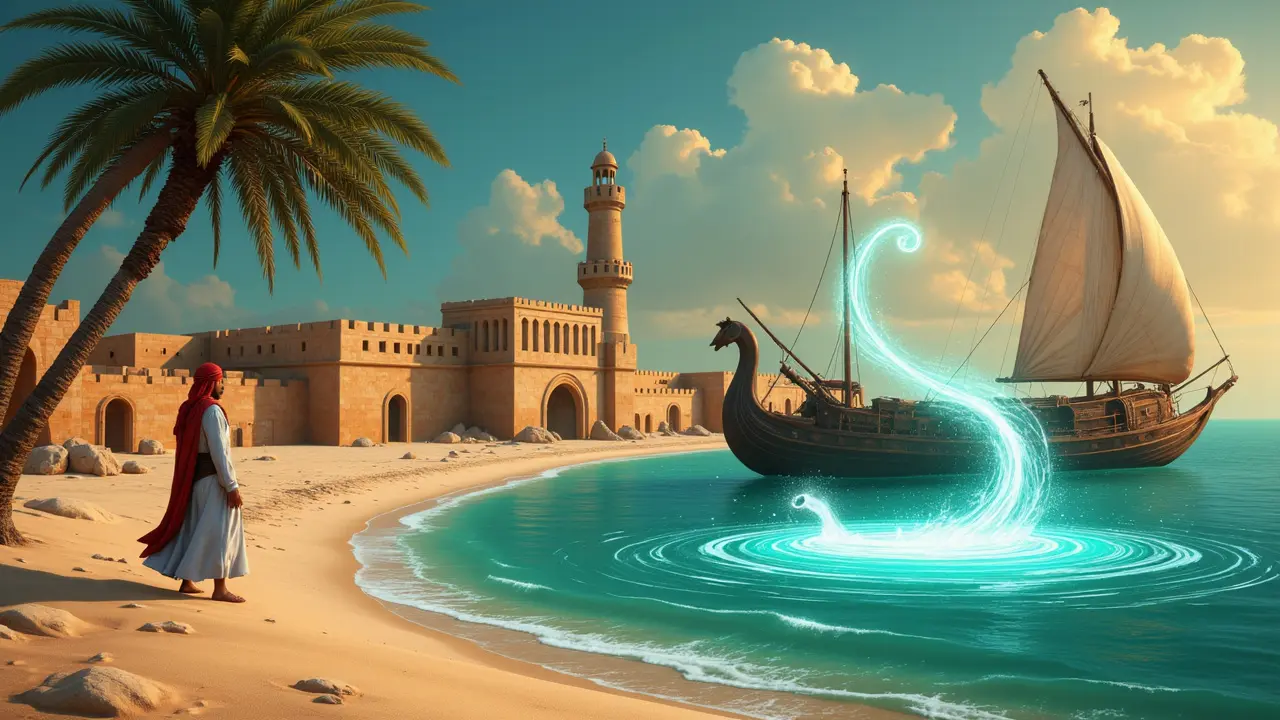
Hidden Gems: Where Locals Still Gather
Many visitors—a lot of residents too—think Dubai’s just about the big stuff: Burj Khalifa, Dubai Mall, endless brunches. But the real Dubai hides in those spots you slip into after Friday prayers or when you want tea strong enough to stand your spoon. The Ruler’s Court Mosque in Bur Dubai remains one of the oldest places of worship in the Emirates, with its white stone halls filled by locals long before prayer apps ping reminders.
Bastakiya’s little alleys host not only art but also informal storytelling nights. Some local poets prefer gathering at the creek by moonlight to share poems about the sea, the sands, and lost cities like Julphar. You don’t need a formal invite—walk up with tea and a smile, and someone will draw you into the conversation. For the latest local art mural, check the end walls behind Arabian Courtyard Hotel; artists repaint them every Eid as a kind of friendly competition.
Looking for old-school Emirati food? Al Ostad Special Kabab is a staple for Dubai residents. The decor hasn't changed in decades, and the waiters greet locals by name. Try the kebabs, sure, but also listen to the regulars discussing old Jumeirah village gossip and the time the Creek almost froze during an unseasonal cold snap in the ‘80s.
Even among expats, the fish market at Waterfront Market is legendary. Locals come here at sunrise to buy, haggle, swap recipes, and hear the latest neighborhood news. The best days are just before Ramadan—everyone stocks up for the big feasts, and the chatter can drown out even the auctioneers’ voices.
| Historical Landmark | Original Use | Local Insider Tip |
|---|---|---|
| Dubai Creek | Trade & Fishing | Abra rides at dawn offer the best sunrise photos |
| Al Fahidi Fort | Defense Tower | Visit during Ramadan for traditional performances |
| Gold Souk | Jewelry Trading | Haggle on Fridays for special discounts |
| Etihad Museum | Union House | Book a local guide to hear political tales |
Keeping Heritage Alive: Practical Tips and Events
If you’re hoping to experience Dubai history like a local, skip the rigid tour schedules and let the rhythm of the community lead you. The best memories aren’t planned—they’re stumbled upon. Here are some ways to get in the loop:
- Ask for Stories: When you’re buying dates or incense at a market stall, ask the seller where their goods come from. Most are happy to share stories of old trade routes, family traditions, or even their favorite Dubai memory.
- Dress Respectfully: When visiting cultural sites, wear modest attire—longer sleeves and pants or skirts. It shows respect for tradition and makes you stand out less as a tourist.
- Use Local Guides: Skip chain tour operators and book with services like Emirati Experiences by Dubai Tourism, where local hosts offer walks through their own neighborhoods, complete with anecdotes you won’t find in glossy leaflets.
- Follow the Calendar: Key events like the Al Marmoom Heritage Festival (focusing on camel racing) and Dubai Heritage Week bring out the best folklore performances, craft workshops, and traditional game demos. Locals take the whole family—so don’t feel odd going with kids in tow.
- Learn Basic Arabic: Even just a polite “Salaam Alaikum” goes a long way, opening doors (sometimes literally) in heritage areas where elders still act as unofficial keepers of tradition.
- Capture, Don’t Disrupt: Photography is welcome in most places, but always ask before snapping photos inside mosques or of local residents. It’s a simple sign of respect—and you might be offered an even better photo spot by a friendly local.
- Taste Traditional Foods: Restaurants like Logma, Khuzi Express, and Fait Maison mix classic Emirati dishes with modern twists. Try Al Harees or Balaleet, especially during religious festivals when recipes become extra-special.
- Join Community Days: Look for flyers about clean-up days along the Creek or storytelling nights in Al Shindagha. It’s how locals meet, reminisce, and pass on traditions to new generations.
Some things just don’t change in Dubai’s old neighborhoods: children darting around souks, shopkeepers waving at familiar faces, and neighbors gathering over chai as the city’s modern skyline glows in the distance. To see Dubai through local eyes, slow down, ask questions, listen out for music—and you’ll discover a version of the city rich in memory, culture, and heart, hiding in plain sight within the rhythms of everyday life.

